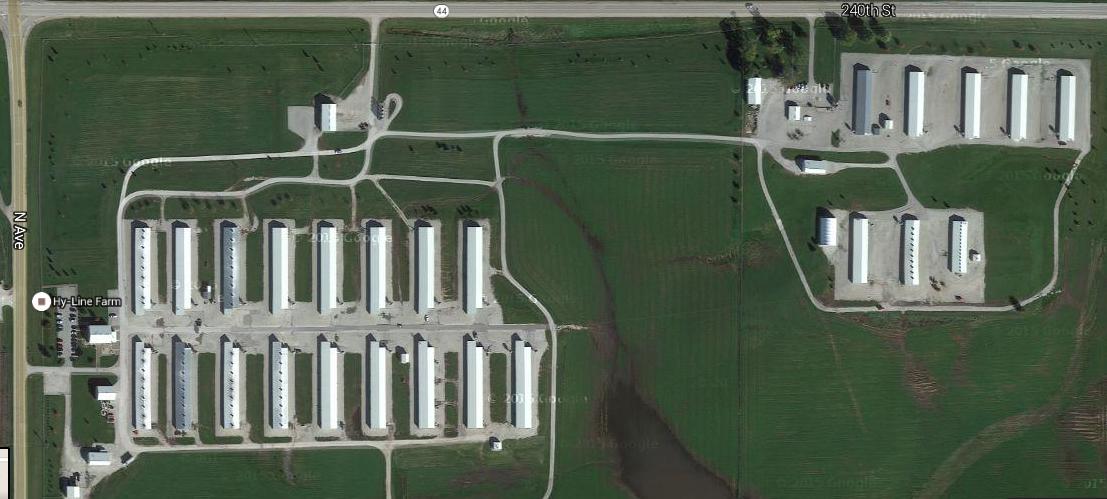

ADEL — Dallas County Attorney Wayne Reisetter offered recommendations to the county board of supervisors Tuesday on crafting a legal tool for enabling the county to exercise its emergency powers in the face of the highly pathogenic avian influenza (HPAI) now sweeping the state.
An ordinance, Reisetter said, would better serve the purpose than a resolution such as the board approved last week empowering the chairman to issue an emergency order. An ordinance would be “putting teeth, so to speak, into actions of the board if emergencies arose,” he said.
In order to help the board deliberate on possible language for such an ordinance, Reisetter gave them copies of an ordinance proposed Monday before the Wright County Board of Supervisors. With 15 million chickens, mostly layers, Wright County in north-central Iowa has the largest poultry population in the state.
The Wright County Supervisors passed a state-of-emergency resolution April 30 “in an effort to take a proactive, preventative approach” to the virulent H5N2 strain of bird flu, according to the wording of the resolution. The Dallas County Board approved a similar resolution last week, empowering its chair to issue a managed-movement order.
“This is really uncharted territory.” –Dallas County Attorney Wayne Reisetter
In spite of Wright County’s preventative resolution, two cases of HPAI were confirmed there May 8, affecting 4 million egg-laying hens. The county is now trying to strengthen its legal authority by means of an ordinance. Reisetter said he has spoken with the Wright County Attorney and expressed his concerns about the ordinance, particularly its provision for the county’s arbitrary self-empowerment.
“At least as far as I’ve looked at the Wright County proposed ordinance, there is no trigger,” Reisetter said, “that is, the board can in its own mind say, ‘We have an emergency. We’re going to do these things, and we’re going to empower the chairman to make these orders and go forward.’ Chapter 29C (of the Iowa Code), on the whole, suggests that there are triggering events that allow some things to happen and that without those things happening, that puts a restraint on government so that government cannot overstep its bounds.”

Chapter 29C of the Iowa Code, copies of which Reisetter also supplied the supervisors, specifies the scope and conditions of a proclamation of a disaster emergency by the governor. Supervisor Mark Hanson asked whether the governor’s May 1 declaration of a statewide emergency would be a suitable trigger for a county’s emergency action. Reisetter answered with a qualified yes.
“If your ordinance looks to put that kind of triggering event in the ordinance where, when the governor declares a state of emergency that includes Dallas County then this ordinance would be effective and allow the board to undertake its powers and make those directives, then that would be the triggering event,” Reisetter said. “Certainly there is a consideration in the other direction where, when Wright County was faced with the severe difficulties that it continues to face, the governor had not yet made a proclamation. In fact, I think it was about two weeks before the governor made a proclamation, so if your triggering event is a governor’s proclamation and there is that kind of delay in some future event, then that would inhibit you from moving forward under the ordinance. So there’s pros and cons whichever way you go there.”
Reisetter also said he spoke with Mark Schouten, director of the Iowa Department of Homeland Security and Emergency Management, who directed him to Chapter 29C of the the Iowa Code because its language could possibly be adapted for use in a county-level ordinance.
Chapter 29C raises several puzzling practical problems and legal anomalies, Reisetter said.
“This is really uncharted territory,” he said. “Can a county control its own roads to reduce the likelihood of unintentional transmission of this terrible influenza and protect its constituents and its constituents’ income? Well, there’s no direct link that the county has that power unless there is some way to put it in an ordinance, and again it comes back to the ordinance. So this is a new circumstance that we haven’t seen in emergency management before.”
One of the anomalies in the Iowa Code’s provisions for the delegation of emergency powers is its omission of county supervisors.
“It gives the governor power, and it gives the various state agencies power, but none of those delegations of power are conferred upon the board of supervisors,” Reisetter said. “So then Chapter 29C goes on the say, ‘Local law enforcement agencies are empowered to arrest if there’s a violation of this chapter.’ Well, if the board of supervisors is not empowered under Chapter 29C, and you need to close or restrict movement on a road, that’s why the ordinance may help. I can’t guarantee it because we’re really out on the edge everywhere, but a resolution has no power of law. At least an ordinance has some power of law,” he said.
“We’re clean and free so far.” –Hy-Line International General Counsel Thomas Jorgensen
The HPAI stakes are higher for no poultry producer in Dallas County than for Hy-Line International. Thomas Jorgensen, Hy-Line’s general counsel, attended the supervisors’ Tuesday meeting and praised their swift and proactive response and Reisetter’s legal leadership on the issue.

“The board reacted very promptly, right away,” Jorgensen said. “Our goal is to keep the bird flu out of Dallas County. We’ve been taking whatever precautions we can, both internally within the company and externally, to protect the health of our flocks. We’re clean and free so far.”
Hy-Line has some 200,000 chickens in Dallas County, according to Jorgensen, about half in its Dallas Center facility and the rest in the hands of 17 contract poultry producers around the county.
Jorgensen also praised the Wright County action as “a positive, proactive step. Their resolution preceded Governor Branstad’s proclamation, and other counties have followed suit.”
Jorgensen said he hoped the Dallas County Supervisors will act with similar dispatch, and Tuesday’s meeting made him confident they would.
According to the U.S. Department of Agriculture’s Animal and Plant Health Inspection Service (APHIS), 32.5 million birds to date have been affected by HPAI since the outbreak was detected in December. About 17 million birds were culled in the 1983-1984 bird flu epidemic, previously the U.S.’s largest.
Iowa leads the nation is egg production, with 60 million laying hens producing 16.5 billion eggs in 2014. The U.S. produced about 100 billion eggs in 2014, and Iowa produced 16.5 percent of total production.
According to APHIS, “As part of the existing USDA avian influenza response plans, Federal and State partners as well as industry are responding quickly and decisively to these outbreaks by following these five basic steps: 1) Quarantine – restricting movement of poultry and poultry-moving equipment into and out of the control area; 2) Eradicate – humanely euthanizing the affected flock(s); 3) Monitor region – testing wild and domestic birds in a broad area around the quarantine area; 4) Disinfect – killing the virus in the affected flock locations; and 5) Test – confirming that the poultry farm is AI virus-free.”
The USDA is also working with state and local agencies to actively look and test for the disease in commercial poultry operations, live bird markets and in migratory wild bird populations.
Reisetter said comparing this disaster to other kinds of natural disasters, such as floods or tornadoes, is challenging.
“This kind of thing is a little more ethereal,” he said, “and so to try to say where else might we need this (ordinance) is a difficult theoretical head game, but certainly I would encourage that it be written broadly enough to cover those circumstances that may arise even in what you might call normal emergencies.”
Toward the end of his discussion with the supervisors, Reisetter posed a big question: “Where do you see an ordinance should fall in among all of the theoretical ideals and the practical aspects of the emergency that the state now faces?”
Dallas County Board of Supervisors Chairperson Brad Golightly spoke for the group: “My thought is that this is an effort to fall in line up with other and all emergency management activities that we can facilitate, just as we could and should do as a board in any emergency. This isn’t just pointed at the current one. So I believe we should take some time and try to compare notes with others to develop this because we’re not the only one this affects.”
















